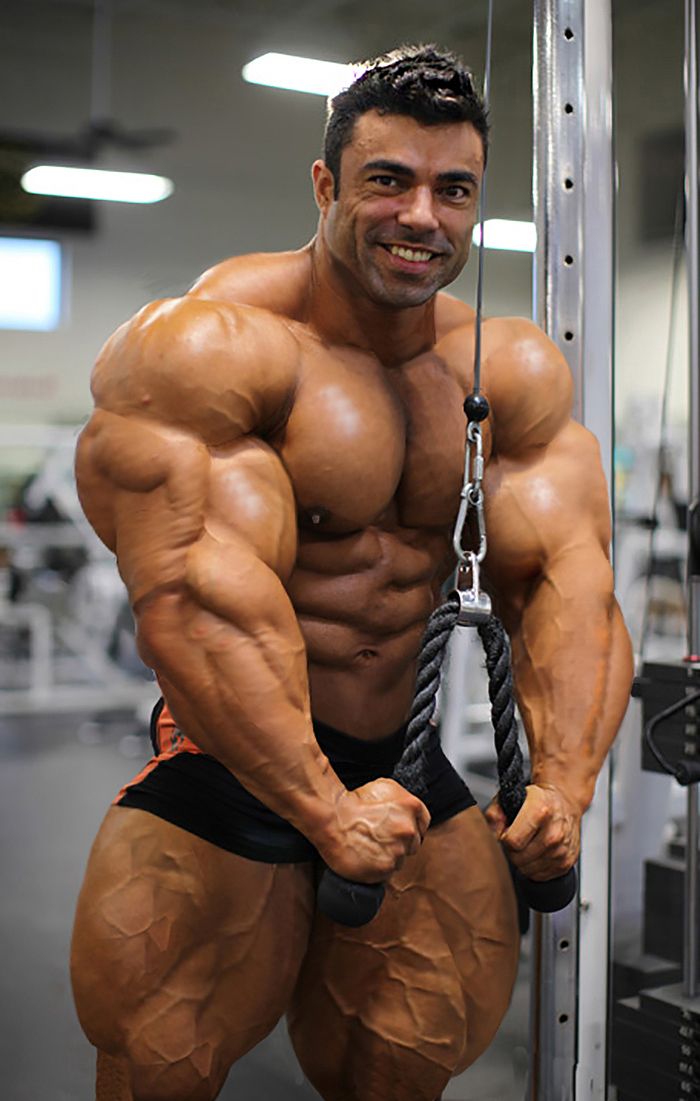Rest-Pause Training Information
We want the best techniques possible when it comes to learning how to build muscle. My routine to build muscle is basic but effective as I have a sorted workout plan in addition to some of the best pills for weight loss that I have added to my diet. And if you add in rest-pause training to this you are onto a killer routine that is going to pack on pounds and pounds of muscle in a very short period of time.

Rest pause bodybuilding training is one of those techniques that has been around forever but is still not understood by a lot of trainees, and it is often used as an excuse to cheat, use weights that are too heavy, use poor form, and basically slack off in a set when you shouldn’t be doing anything of the sort. This article, and the series of workouts that will be associated with it, will give you all that you need to know about training using rest-pause sets, for maximum growth and maximum poundage progression.
What Is A Rest-Pause
A rest-pause is simply a name given to a technique in weight training where you rest between each rep. You will be resting in the position that you begin your set of reps in. i.e the top position is Squats, or with the bar hanging in a set of curls. The position where there is no force being generated. Let’s look at the technique in detail.
Rest-Paue Technique: How To Do Rest-Pause
The technque for rest-pause is actually very simple, but results can be amazing. But bear in mind that this makes severe inroads into your ability to recover between workouts. It may well mean that you need 1 or 2 days extra rest between workouts, to compensate for the extra inroads that you are making into your ability to recover.
How Long To Pause In Rest-Pause Training
Let’s use the Trap bar deadlift as our example for the rest of this article. But we could just as easily be talking about the Squat. In the deadlift, we begin with the bar on the floor. We bend out thighs, with our back straight, and grip the bar. We then perform our rep by straightening our legs and lifting the bar until we are stood up, then we lower in the same way.
We then let go of the bar and stand up.
1 rep performed. We take a few deep breaths, really deep, and then repeat another rep and rest again. As the set progresses you will find that you need more and more rest between reps, but it should never be for more than a few seconds at a time, to begin with. As you get more used to training in this way you can increase the amount of weight used for the same number of reps. And this will mean that your rest between reps will increase as you struggle to cope with the load.
The Weights Used
You will maybe have read something about picking a weight that you can only perform ten reps in a row with and simply doing 20. That is all well and good once you have built up your stamina, but if you start like this you are going to very prone to an injury. Add maybe ten percent to the bar, using the deadlift as an example, for a set that you can do 20 reps for. And then perform your set with minimal rest between each rep. It will not make the set harder than just doing them with no rest-pause between reps.
Once you are used to this style of training and have ensured that you never let your technique suffer, then you can begin to gradually add weight to the bar each workout.
How fast you progress is going to be down to how much rest you get between workouts and how much you take care of sleep and nutrition. But one thing is for sure, if you are not literally dead on your feet by the end of the set and gasping for breath like a madman, then the weight is not heavy enough.
How Many Reps
Rest pause training is ideally suited to heavy leg work or other compound movement exercises. It takes a massive amount of effort to perform bodybuilding training in this way, but the results can be immense.

High Rep Rest-Pause
For best results with the legs, you should be looking at performing 20 reps a set.
And trust me, you will NEVER need to perform more than one set like this.
You may begin the set with no resting between reps, but by rep 8-10 you should absolutely HAVE to put the bar down or rest in the beginning position, to take a good few deep breaths. By the final 5 reps or so you should be feeling like the world is about to end. It should be that hard.
It should be a challenge to even grip the bar and perform a rep. It should see you sweating and it should see you ready for a very long lie down.
But the rewards in terms of growth and poundage progression once you return to a more normal way of performing your sets are going to be huge, gigantic in fact.
But if you think this is an easy way to train or a way to train that can be done often, then you are in for quite a shock. It is brutal in the extreme.
Rest-Pause Workout Routine
Follow the link posted earlier to the workout routine and use that as your basis. It is brief but works just about as well as any other routine on the planet. A short workout, mostly with compound exercises, is all that is needed to get larger muscles than basically everyone else on the planet.
We then have 2 options when it comes to rest-pause bodybuilding training. We perform the rest-pause set at the beginning of the end of our workout. After having tried it both ways over many years I have found that for me personally it is best performed at the end of a workout.
Why?
Basically, because it ensures my body is warmed up properly. This makes you less prone to injury.
But also, and the most important point for me, the fact that if I do it first in the workout then I am so damn tired I don’t have the energy for anything else. My advice? Experiment and see what works best for you. You should find that one way gives you better results than the other. It is down to your frame of mind and what is going to feel the best for you personally.
Rest-Pause Training Results
Results from rest-pause training are impressive, to say the least. But you will find that you cannot carry on working in this way for an extended period of time. It is just so taxing on the system. I would recommend using rest-pause training workouts for a month, using only one exercise as well.
The results after a month should be immense. You are going to increase the weights that you can handle by an insane amount. And this will have resulted in large increases in muscle mass as well.
But, and there is one, only if you take care of two very important aspects. Rest and nutrition.
Rest-Pause For Mass
Rest pause training for mass gains are effective as long as you take enough time off between workouts. You should ensure that you are fully recovered before your next workout session. I can0t tell you how much rest you need, we are all different. But you need to keep a close eye on your body and ensure that you are fighting fit when you perform your next workout.
If you feel any kind of twinge, or feel not quite right when you start your next workout, stop immediately and take a day or two’s extra rest to ensure that you can come back and give it your all, and not get injured along the way either. Now, for mass gains, you need hard, very intense rest-pause style training, but you also need to eat like a maniac.

Increase Appetite
You will NOT have to worry about force-feeding yourself if you train in this way. You will simply be ravenous. Let your appetite dictate what you eat. If you do leg work in this manner then you will be floored by how hungry you become, and this will begin an hour or two after the workout and continue for at least a few days.
This is hardcore training people, and the food you will consume will be immense. But the results will be huge too, just like you!
Get to it, 20 reps of rest-pause training for the legs, you are going to get massive, and fast. Not just in the legs though, work like this has an effect on the whole body. It stimulates overall growth in the legs, buttocks, back, arms, and neck. If you only did one exercise a workout then it would be trap bar deadlifts or the squat. And always do Squats when training like this in a power rack. The potential for getting stuck in the bottom position is too large otherwise.
